What Would You Do? Part 4: Stuck in a Canyon: Practical Advice for Emergency Situations.
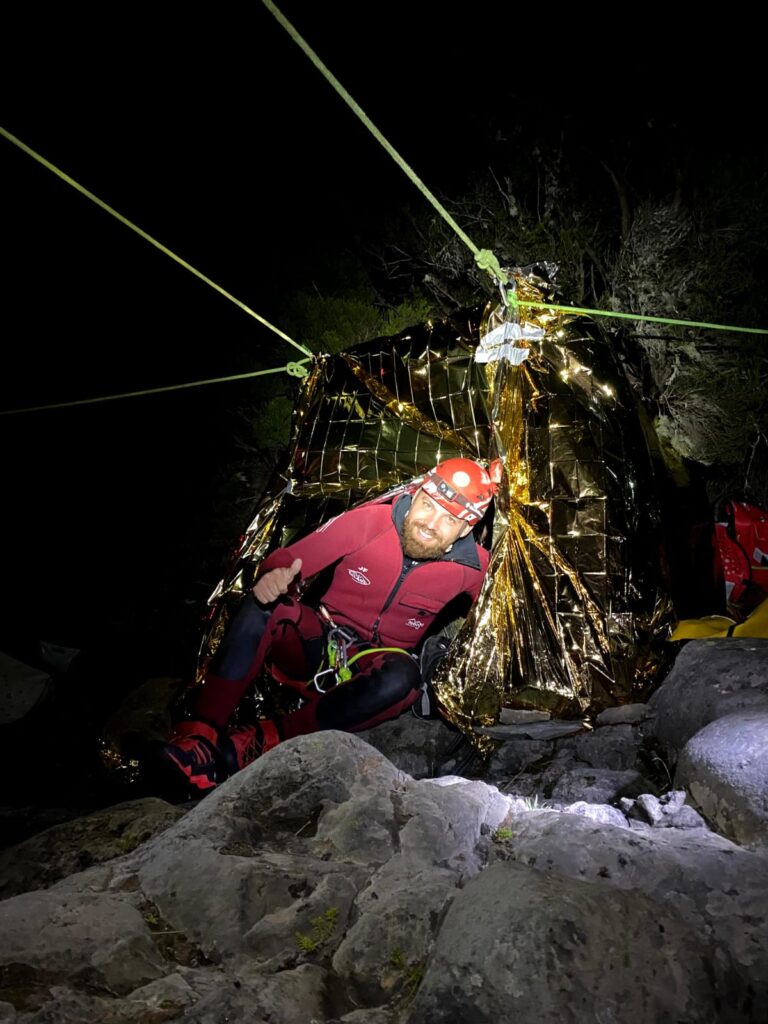
In Part 3 of our 4 part series “What Would You Do?” we went over the strategies to plan ahead and prepare yourself and your party for a canyoneering adventure.
A prepared party is a successful party, and on the fun days where everything goes well the precautions you take are not perceived, as they are not needed. But, when things go wrong, you will have the benefit of being prepared.
Despite thorough preparation, there may still be situations in which you find yourself stuck in a canyon and in need of rescue. In such circumstances, it is crucial to have a plan to put into motion so that you and your party can stay safe while you await rescue.
sTEP 1: Don’t Make It Worse
Avoid Dangerous Actions:
In an emergency it is essential to prioritize safety. Don’t do anything that could make the situation worse, such as climbing up exposed cliff faces, or down-climbing slippery rock. These are the tempting traps that seek to offer you a false escape. It is human nature to seek escape when trapped. Before making any attempt to escape your situation, sit down and relax for 5-10 minutes. Allow the adrenaline and the fear to subside. Breathe deep and relax. Remember, you are alive, you are safe, in the future this will all be over if you don’t kill yourself trying to avoid rescue.
Canyoneering practices have been developed to minimize and mitigate risk. Once you abandon standard canyoneering practices and start taking risks to avoid requiring a rescue then you are putting yourself and your party at risk to further injury and/or fatalities. The only thing worse than being stuck in a canyon is being stuck in a canyon with broken ankles or a dead body.
Step 2: Call Out for Help
Utilize Your Safety Plan:
Having a pre-established safety plan and a reliable safety contact is crucial. Once your team decides that you need rescue then your priority is on getting a message to your safety contact. Use your team’s inReach to send a message to your safety contact.
Explain your situation clearly and provide details that will help them understand the urgency, nature of the problem, AND what you need them to do.
Pro-tip: Getting a message out to a satellite in a deep canyon can be difficult or impossible. You need to evaluate your situation and the surrounding terrain to decide how to get your message out. Getting out of the canyon walls or under open skies may be necessary. Remember not to expose yourself to dangerous situations while calling for rescue. This is why your safety contact has a plan if you don’t contact them.
Local Resources First:
Before activating Search and Rescue (SAR) services, attempt to utilize local resources if available. In some areas, you may have friends or know locals that can provide assistance or guidance. By reaching out to local contacts, you may be able to expedite your rescue and minimize potential risks associated with SAR operations.
Step 3: Set Up a Temporary Bivy
Rescues can be very slow. It takes time to get the message out, assemble a team, and travel through the canyon. Thus, it is often the case that you need to have a strategy to keep you and yourself warm.
If you expect to wait a significant amount of time in a cold wet canyon, then you should consider building a bivy to keep you and your team warm.
Thermal Blankets and Duct Tape:
It is crucial for each member of your group to carry a personal thermal blanket and tea candles. However, if you find yourself stuck with a larger group, improvising a makeshift bivy can help keep everyone warm. Use duct tape to secure two or more thermal blankets together, creating a larger shelter that can accommodate the group. This can significantly aid in maintaining body heat and preventing hypothermia.
how to construct an emergency bivy with thermal blankets:
1st find an ideal location with rigging points (a tree, a boulder, the canyon wall) and a comfortable place to sit. You will want a location that is protected from wind, flash flooding, and rock-fall.
2nd duct tape two thermal blankets together. Use spare rope, webbing, and p-cord to rig a tent like structure. Fold the blanket inwards on the ground and put your bags on top of the blanket to hold it to the ground and protect the inside from wind.
3rd insulate the ground with bags, rope, and potentially wetsuits. Everyone can pile into the makeshift bivy and your body heat will keep eachother warm and comfortable while you wait.
4th heat the bivy with candles and body heat. Stay warm while you wait! A bivy should be a comfortable place to pass an emergency.
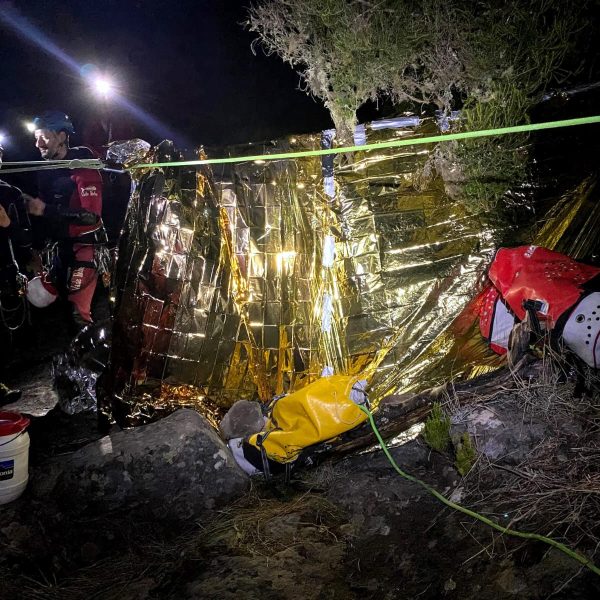
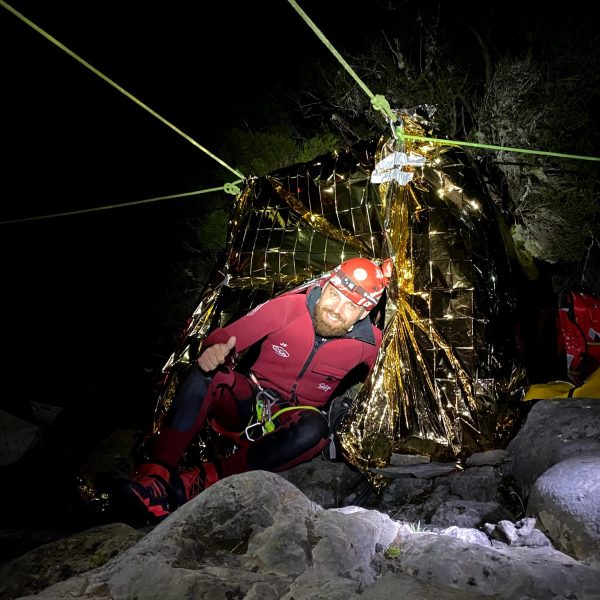
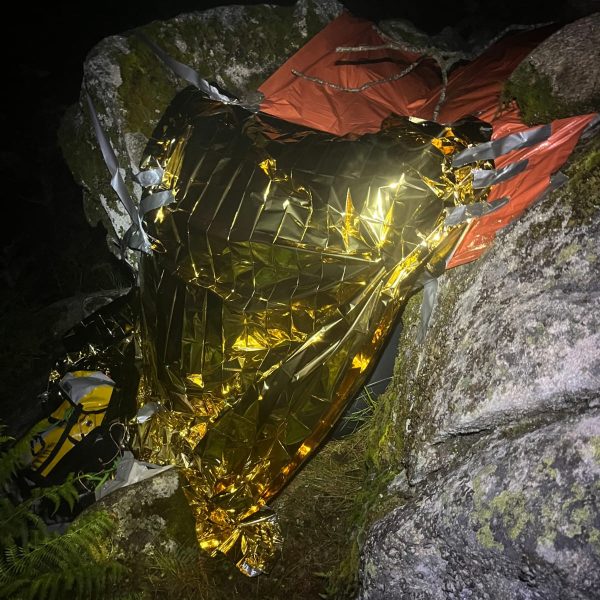
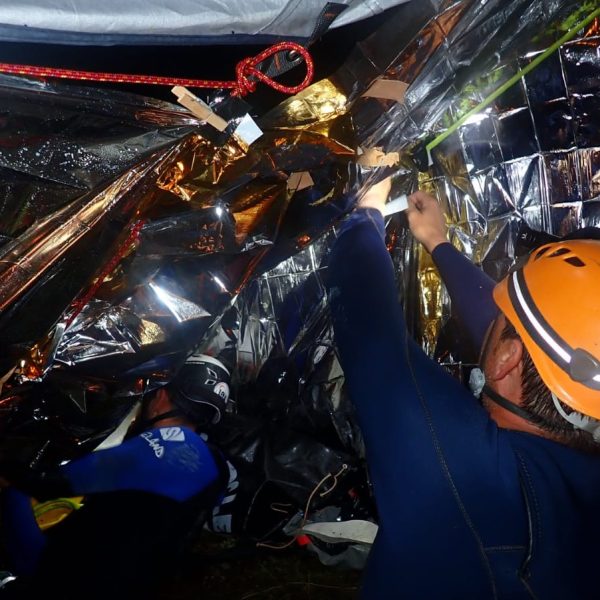
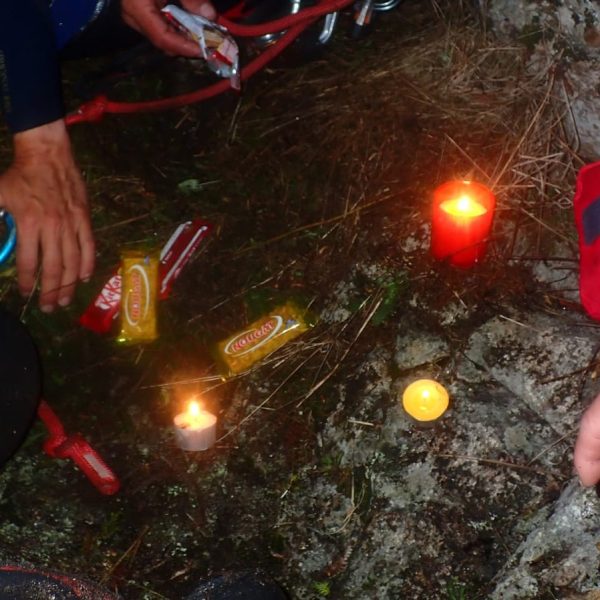
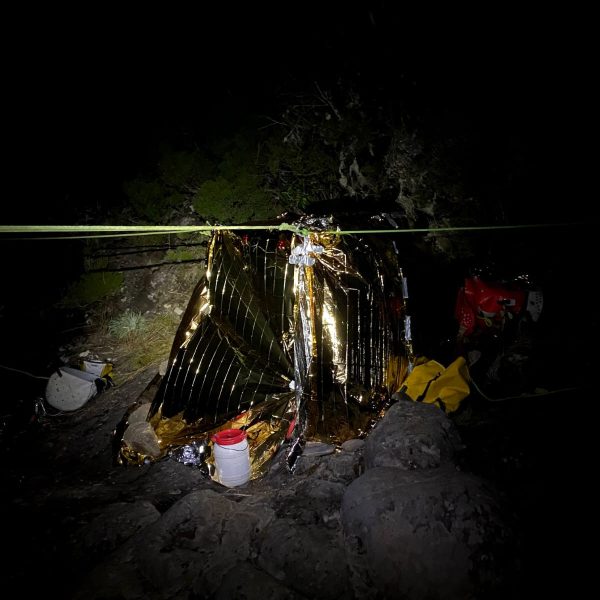
Step 4: Waiting, Eating, and Hydration.
Patience and Rest:
Once you have established a secure position and set up a bivvy, focus on waiting for rescue while conserving energy. Stay calm and patient, as rescue operations can take time. Use this period to rest and mentally prepare for the arrival of help.
Eat and Stay Hydrated:
Maintain your energy levels by consuming the food you brought with you. Ensure everyone in the group stays hydrated by rationing water and drinking regularly. Adequate nutrition and hydration are crucial for maintaining physical and mental well-being during a crisis.
Conclusion:
In a canyon emergency, it is essential to avoid exacerbating the situation, reach out for help through your safety plan, set up a temporary bivy for warmth, and practice patience while waiting for rescue. By following these practical guidelines, you can increase your chances of a safe and successful resolution to the crisis. Remember, prioritizing safety and maintaining a calm mindset are key to managing the situation effectively
Safety: Wild Sky Adventure Guides strongly endorses professional instruction supplemented by a more experienced mentor.
In the PNW the most common training organizations are V7 Academy, the American Canyoneering Association, The Seattle Mountaineers, and The American Alpine Institute. Seek out instruction!
Be sure to visit the WA Canyon Coalition Safety Page for more information on best practices for your visit to the PNW.
Happy Canyons!

